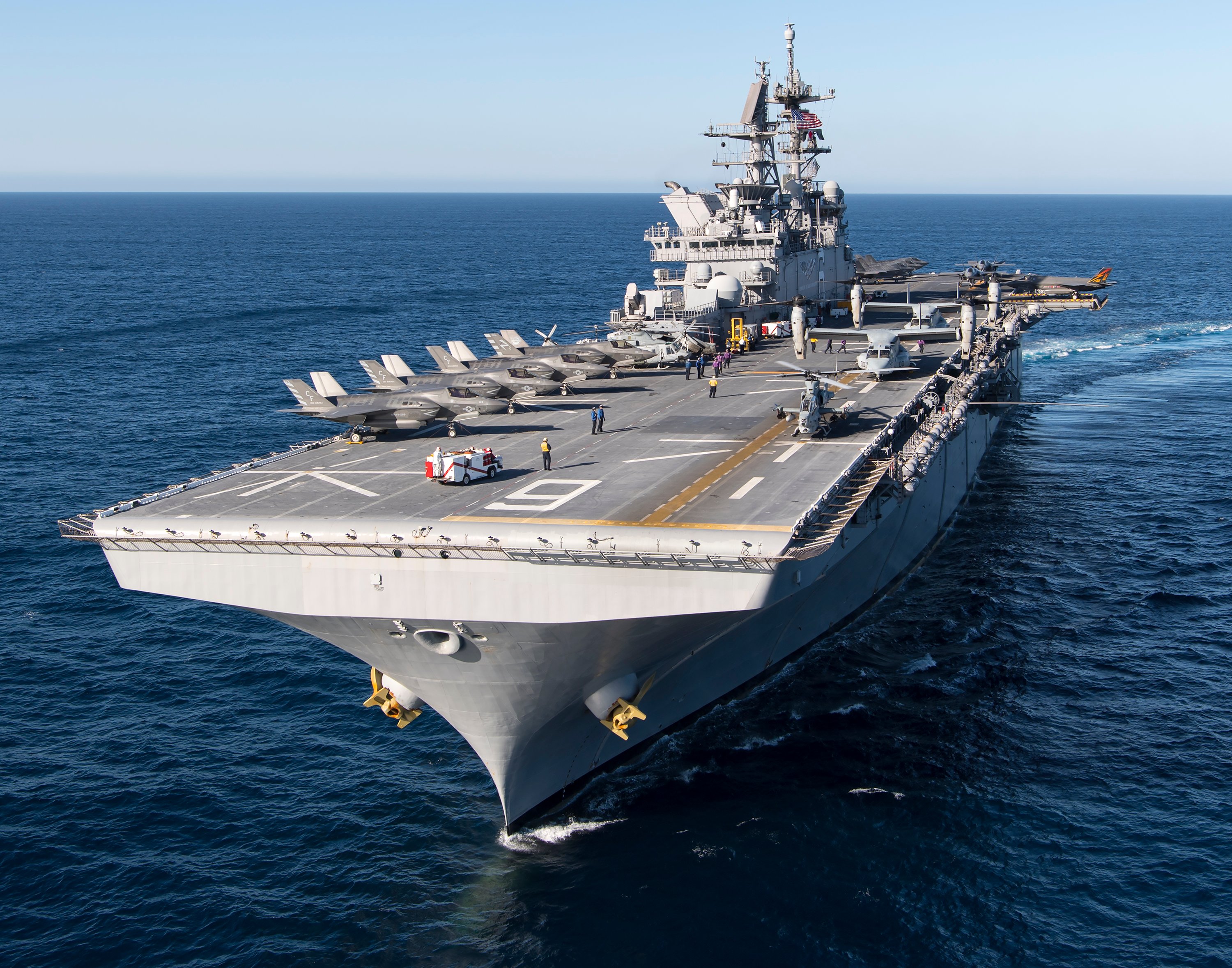Ladies and gentlemen, a round of applause for Huntington Ingalls (HII +1.00%)!
On Wednesday, America's foremost naval shipbuilder reported a whopping $3.27 per share in net income under GAAP, easily cresting the $2.78-per-share target that Wall Street had set. Revenues, likewise, exceeded Wall Street's expectations, coming in at $1.86 billion -- $600 million ahead of estimates.
Investors applauded, sending Huntington Ingalls stock up 8% for the day. But was the news all it seemed to be on the surface? Let's find out.

Huntington Ingalls builds nuclear-powered supercarriers -- and profits. Image source: Getty Images.
What Huntington Ingalls said
Huntington posted 11% sales growth in its fiscal third quarter, helped by the acquisition of security and cyber specialist Camber Corporation and its $364 million-a-year revenue stream, late last year. Operating profit margins on the company's $1.86 billion in quarterly revenue surged 230 basis points to 12.7%, leading to a 39% jump in net income for the quarter and a 44% boost to earnings per share.
At the "segment" level, Huntington Ingalls' greatest growth was seen in its relatively new "Technical Solutions" business -- not surprising, as that's where Camber's revenues were put. Huntington's TS unit enjoyed a 56% rise in revenue year over year, and 267% growth in operating profits on strong margins -- 9.1%.
Newport News Shipbuilding was Huntington's biggest revenue contributor and its second-best improver, posting an 8% gain in revenues, 9.1% margins, and a 41% improvement in profits. NNS is the Huntington business responsible for building big-ticket nuclear-powered aircraft carriers and submarines.
Ingalls Shipbuilding, which builds non-nuclear-powered destroyers, amphibious assault ships, and Legend-class National Security Cutters, saw the smallest growth in revenues (3%). Still, with margins expanding 110 basis points to 12.5%, it remains Huntington's most profitable unit -- and those profits grew 12% in comparison to last year's Q3.
Caveats and provisos
Overall, therefore, Huntington's results range from good to great -- but the numbers weren't entirely without blemish. One thing especially deserving of criticism was Huntington Ingalls' cash performance.
In Q3 2017, Huntington Ingalls says it generated a mere $5 million in free cash flow, far less than the $149 million in "net income" it reported and far less than the $194 million in free cash flow produced in last year's Q3. In fact, Huntington's free cash flow has been weak all year long, hurt by the need to make higher pension contributions. Here at the three-quarters mark on the fiscal year, Huntington has only produced $152 million in total free cash flow -- less than half the $332 million in cash profit Huntington had produced by this point in time, one year ago.
That's a pretty steep dropoff in cash. Valuation-wise, it means that Huntington Ingalls stock that costs 18.6 times trailing GAAP earnings is selling for a whopping 32 times trailing free cash flow. Even if Huntington Ingalls maxes out analyst hopes for 27.5% annualized profits growth over the next five years, it's hard to call Huntington Ingalls stock a bargain at these levels.
If I were a shareholder, I'd be looking to cash out and take profits after last week's strong price rise.





